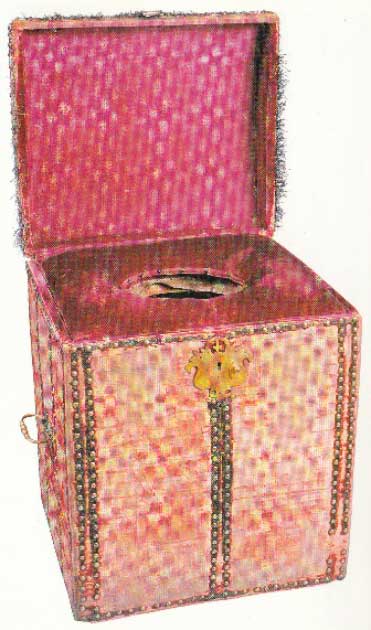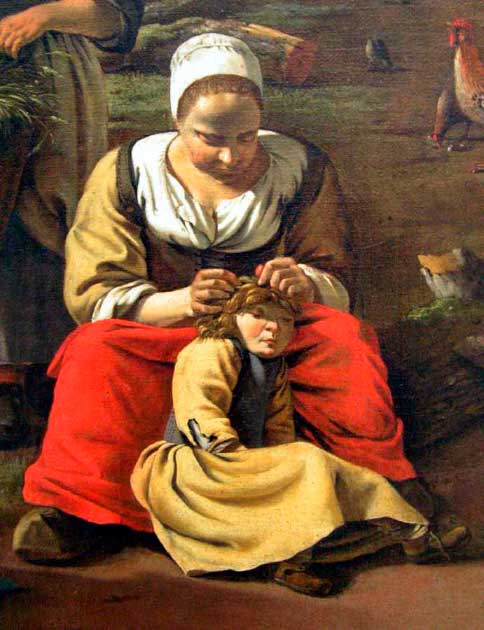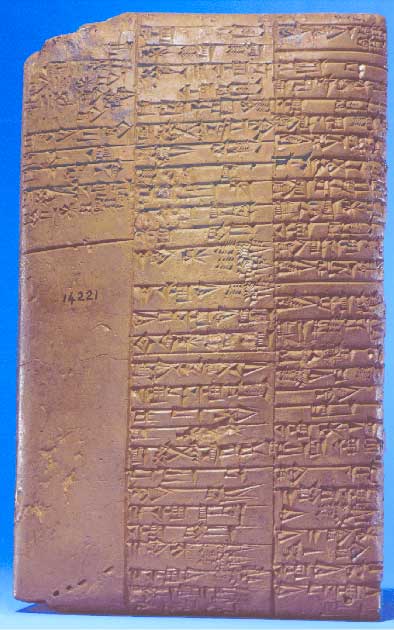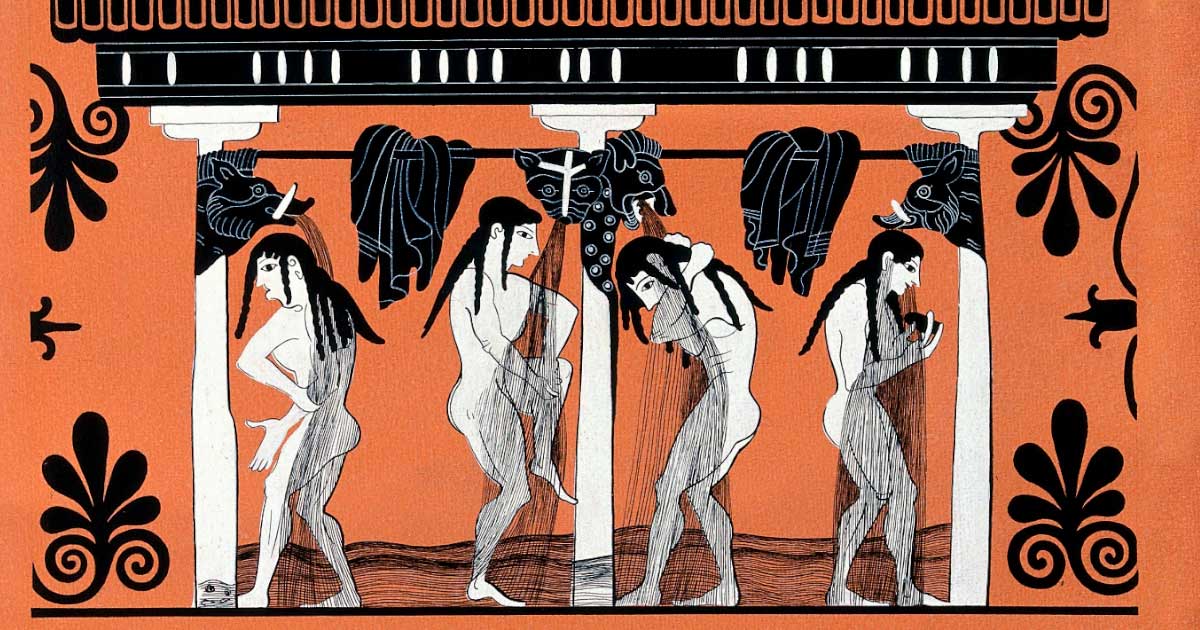Hygiene Through History: How Filthy Were Our Ancient Ancestors?
People in the past have a reputation for being dirty and unhygienic, but is this true? While many aspects of personal hygiene have evolved over the centuries, others have remained surprisingly similar. So, how did our ancestors’ hygiene practices differ from ours?
Toilet Hygiene: A Messy Affair
An obvious place to begin when discussing the hygiene practices of our ancestors is with their toilet habits. Until relatively recently, most homes were not equipped with indoor bathrooms or running water. Individuals in the past, therefore, had rather different toilet habits from us.
For example, it was not uncommon for medieval houses to be equipped with closet-like rooms or nooks where people could go to relieve themselves in chamber pots. Some of the richest in the medieval period even had early forms of pipework, which would transport dirty water and human waste out into a cesspool. Despite these very early versions of indoor toilets, people did not always feel inclined to use them.
There are some accounts of people relieving themselves in dark corners of their own or friends' houses. There were also some who used empty fireplaces or hid behind tapestries and curtains. The main motivation for such actions seems to have been pure laziness. Individuals didn’t want to remove themselves from the discussions or games that were happening around them.
One of history’s worst jobs was linked to the toilet habits of our ancestors, and that was the ‘Groom of the King’s Close Stool.’ The person in this position was tasked with the job of monitoring and assisting the king with his bowel movements.
The position was first created by Henry VIII, and it eventually became a highly regarded position. This was because people who held the role often climbed to high social standing due to the trust of the king. The job involved the very intimate details of human life, and often offered a promising, albeit disgusting, fast track to the king's right-hand side.
It was therefore common that many noblemen’s sons or gentry members applied for the position in order to improve their position at court. Some rose to the position of secretaries with high pay and benefits. It is thought that the name for the position came from the toilet, which would have been carried about all the time in case the king required it. There would also be water, towels, and a wash bowl carried with it.
The position remained in place for a long time, and famous kings of England employed a Groom of the King’s Close Stool, including ‘Mad’ King George. In fact, the position was only abolished in 1901 by King Edward VII.
- Ancient Romans Brushed Their Teeth with Urine
- Rare First Temple Period Toilet Discovered In Jerusalem

King William III's close-stool, circa 1650. The hygiene habits of royalty was quite different from the masses (Public Domain)
Household Hygiene: Lice, Rodents, and Other Vermin
Our ancestors were also faced with another unhygienic problem: vermin. From head lice to bedbugs, our ancestors' lives would have been riddled with tiny beasts.
Bugs were such an issue because it was common in the medieval period, particularly in poorer households, to line the floors with straw. This was mainly to keep the damp away; however, it also provided a warm home for bugs and insects.
Sometimes, nice-smelling flowers or herbs were added to the straw in order to improve the smell of the room. This unfortunately did nothing to prevent these bugs from breeding or spreading infections though.
These straw floors caused a lot of problems when they were located in rooms where food was eaten. Food dropped onto the floor and was often not cleaned up. Although dogs may have cleaned up some of the droppings, the rest would be food for rodents and bacteria.
These bugs not only made their homes on the floors of houses, however. Bedding, and even people's own bodies and hair, made perfect places for them to live. Many people who lived in the Middle Ages were infected with lice.
- Oldest Soap Factory in the World Found, and It Was Vegan
- Bygone Beauty and Body: The Origins of Cosmetics in the Ancient World

Medieval depiction of a plague of lice, from the Golden Haggadah (© British Library Board / CC BY SA 4.0)
For those at the poorest levels of society, it was common to share a bed with other family members. Because of these cramped conditions, these insects traveled easily between victims and, disease spread quickly without obstacles. This was also the case in the servant quarters of mansions, where many domestic workers were crammed together in tight spaces.

Detail from 1662 oil painting Cour de Ferme depicting a time-tested, mother-approved lice treatment. (Johannes Siberechts / Public domain)
Body Hygiene: Ancient Soap and Showers
Some of the wealthiest people in the medieval period may have had access to clean water through servants who were called water carriers. These were the people tasked with bringing fresh water to the home for individuals bathe. If you were poor, as many of the people in the period were, you would have to travel to the nearest river to collect clean water.
Although we often stereotype them as incredibly dirty, our ancestors were probably better acquainted with soap than we believe. Soap was first invented by ancient Babylonians as early as 2800 BC.

Mesopotamian clay tablet (3rd millennium BC) showing recipes for a natural soap. (Penn Museum / CC BY NC ND 4.0)
Archaeologists have found remains of what they believe to be soap in clay cylinders found at historic sites. Some of these containers have inscriptions like ‘fats boiled with ashes,’ which was a common way of making soap.
Egyptians were also said to have bathed regularly, evidence of which can be found in the Ebers papyrus. This was a medical text produced around 1500 BC, which contained details on how to combine animal and vegetable oils with salt to make soap. This soap was not only used for washing, but also to treat skin conditions.

The Ebers papyrus from ancient Egypt, circa 1550 BC, included soap making recipes (PhotoHound / CC BY SA 3.0)
The Greeks were also extremely clean. Not only did they use soap, but they also invented a very early form of the shower, which sprayed users with water. As well as public washing places, the richest ancient Greeks had their own bathrooms. They also rubbed themselves with olive oil, as well as used bowls that stood on pedestals ( louterion) to wash if they didn’t have a proper bathroom.
Despite its extremely early origins, it was the Romans who gave soap its name. It comes from the legend of Mount Sapo, which told of rain running down a mountain, mixing with animal fat and ashes and forming a clay-like soap.
The Romans, like the Greeks, also understood that dirt was causing disease. They were famous for building aqueducts to supply their towns with clean water. They also built public baths as well as cold and hot rooms. Like the Greeks, Romans also rubbed their skin with oil and made their own soap.
During the Middle Ages, there seems to have been a general decline in bathing, but this does not mean people stopped altogether. In Japan, it was customary to wash every day and in Iceland, people made use of the hot springs.

Public bath houses in Japan increased daily bathing (Torri Kiyonaga / Public Domain)
In some places during the Middle Ages, there were bathhouses which people could pay to use. In fact, in the 14th century, there was one installed in the Palace of Westminster by the English King Edward III. People who could not afford to install a bathhouse in their own homes had to rely on a simple wooden tub.
It was thought that soap began being made in England in the 12th century and in the American colonies in the 17th century. People were also making soap across Europe at this time, particularly in areas that grew olives as their oil was great for soap.
During this period, the people of England were said to bathe outside in rivers if they could not access their own private or public baths. Some people took to ‘dry washing,’ which involved, as the name would suggest, wiping their body down with a clean cloth.

Bathing in rivers was quite common when private and public bath access was limited. Illustration circa 1410. (Guillaume de Boldensele / Public domain)
It was during this time that bathing became popular again, as it was in the Roman period. Of course, this was much of the case in wealthier areas, but poorer people were unable to spend money on things like soap and were not able to access privileges like hot or running water.
During the Middle Ages and early modern period, one place of particular cleanliness was the monasteries, which often advocated for good hygiene. They often contained written instructions on how to wash one's hands before mealtimes.
Monasteries often contained dedicated rooms where one could go to wash their hands before a meal. These rooms were given the name lavatoria. However, these were not bathrooms as we know them today. There was not a space in these rooms for relieving oneself; they remained entirely for hand and face washing.

Fountain of the Lavatorium of Maulbronn Monastery, Maulbronn, Germany (Zairon / CC BY SA 3.0)
Youch! Ancient Dental Hygiene
Another aspect of hygiene in the past which is discussed at great length is that of the mouth. There is no doubt that dentists of the past have a fearsome reputation.
Towards the end of the 17th century, toothbrushes were introduced in England, and prior to this, there is evidence that people used toothpicks. However, most people remained negligent when it came to keeping on top of their oral hygiene.
Dental problems were rife for much of history. Some ancient Sumerian texts record dental problems, one of which is given the name ‘tooth worms.’ This theory came from the fact that cavities leave visible holes in the tooth. Dentists at the time didn’t understand the true cause of these holes, and so came up with the idea that they were caused by worms.
What this indicates to historians is that people in history were concerned with oral hygiene; this is discerned from the simple fact that it was included in texts on general health.
Little was done in terms of preventative measures; much of dental hygiene in the past was centered on treating the problem after it existed. However, some civilizations accidentally and unknowingly improved their dental hygiene.
Skeletons of Roman people who resided in Rome show that they had healthier diets than the rest of the people living in the Roman Empire, which meant their teeth were preserved better.

Miniature on an initial 'D' with a scene representing teeth ("dentes"). A dentist with silver forceps and a necklace of large teeth, extracting the tooth of a seated man, circa 1360. (Public Domain)
Ancient Grooming and Cosmetics
The ancient Egyptians in particular were known for their good hygiene. They, as we have seen, bathed frequently and even wore makeup. The ancient Greeks had a similar reputation and emphasized the benefits of a healthy diet.

This Egyptian cosmetics and toiletry set includes a tube for the eye cosmetic kohl, a razor, tweezers, a whetstone, and a mirror, circa 1550 BC. The objects were in a rush basket in a section of the Theban necropolis known as lower Asasif (Met Museum / Public Domain)
As far back as the ancient Roman period, women were said to have used razors. There have also been found tweezers, pumice stones as well as depilatory creams which were used to remove hair.
In Tudor England, it was said that people cared about their appearance. People took to carrying little glass or steel mirrors. Some also carried tweezers as well as combs, ear scoops, and bone manicure sets.
There is evidence that people have been shaving since the earliest days of man. It is believed that they used sharpened rocks to scrape away facial hair. They may have also removed facial hair by plucking it.

A nude reclining Aphrodite and Ancient Roman and cosmetics and beauty care: unguents, perfumes and makeup. Paints often came from the Orient, particularly Egypt, famous for its eyeliners. Lipstick and facial color powders were used, including Oriental imports of expensive unguents. (Notafly / CC BY SA 3.0)
Conclusion
In conclusion, while there is no doubt that people in the past were dirtier than we are today, they may not have been as dirty as they are often thought to have been. There is evidence that many used soaps, washed their clothes and went to the dentist.
Ultimately, wealth and social status played a massive part in the ways people were able to access health care and hygiene methods. For example, it was much easier for those who belonged to the gentry to add a private bathhouse than it was for those living below the poverty line.
Top Image: Hygiene has evolved over the years, but we’ve been taking showers for centuries. Women bathing in a public gymnasium; Gouache painting based on an ancient Greek vase. Source: Wellcome Collection / Public Domain
By Molly Dowdeswell
References
Harvey, K. March 3, 2020. The (not so) stinky Middle Ages: why medieval people were cleaner than we think. HistoryExtra. Available at: https://www.historyextra.com/period/medieval/did-medieval-people-take-baths-why-they-were-cleaner-than-we-think-middle-ages-hygiene-handwash-washing-cleanliness-coronavirus-plague-covid/
Holzwarth, L. August 31, 2013. Disgusting Hygiene Habits in History that Have Us Running for the Shower. HistoryCollection. Available at: https://historycollection.com/disgusting-hygiene-habits-in-history-that-have-us-running-for-the-shower/7/
Howell, H. August 5, 2022. A History of Humanity’s Disgusting Hygiene. Owlcation. Available at: https://owlcation.com/humanities/A-History-of-Dirty-Habits
Johnson, B. n.d. Groom of the Stool. Historic UK. Available at: https://www.historic-uk.com/HistoryUK/HistoryofBritain/Groom-of-the-Stool/
Lambert, T. n.d. A History of Washing. Local Histories. Available at: https://localhistories.org/a-history-of-baths-and-showers/
Soaps & Detergents History. n.d. Cleaning Institute. Available at: https://www.cleaninginstitute.org/understanding-products/why-clean/soaps-detergents-history

















